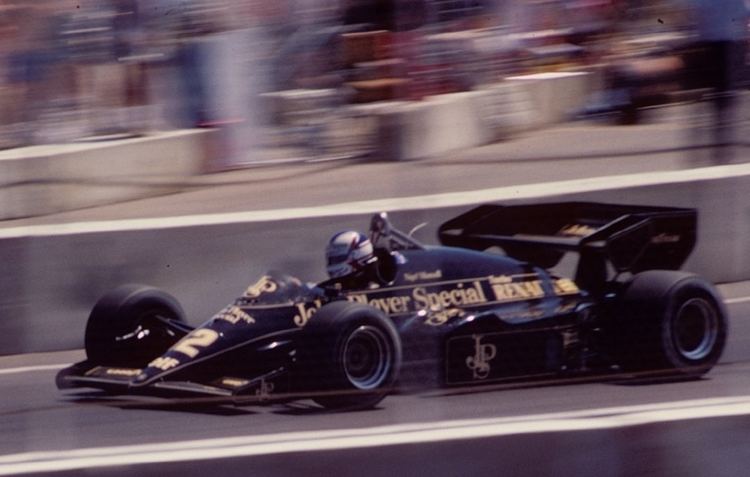 | ||
The Lotus 95T was a Formula One racing car designed by Gérard Ducarouge for use by Team Lotus in the 1984 Formula One season. The car was powered by the Renault Gordini EF4 V6 turbo engine and ran on Goodyear tyres, after Lotus had switched from Pirelli. It was a development of the Lotus 94T, which had proved competitive at the end of 1983.
The car was driven Elio de Angelis and Nigel Mansell, both of whom were consistently competitive in a season otherwise dominated by McLaren. De Angelis finished in the top five on eleven occasions, including four podium finishes; he also took pole position at the opening race in Brazil. With 34 points, he was third in the Drivers' Championship.
Mansell, meanwhile, finished third in France and the Netherlands, and was running second in the final race in Portugal when his brakes failed (which handed Niki Lauda the Drivers' Championship by half a point from Alain Prost). However, he also crashed out of the lead at a rain-hit Monaco (which prompted team boss Peter Warr, with whom he had a difficult relationship, to famously declare, "He'll never win a Grand Prix as long as I have a hole in my arse"), and in oppressive heat at Dallas he took pole position and led the first half of the race, before his gearbox failed on the final lap and he collapsed from exhaustion trying to push the car to the finish line. He ultimately finished equal ninth in the Drivers' Championship with 13 points, the same tally as Ayrton Senna, who would replace him for 1985.
With a total of 47 points, Lotus placed third in the Constructors' Championship, its best placing since 1978. The 95T was seen by many in Formula One as being as good as the dominant McLaren MP4/2, its biggest problems being the tyres, the gearbox and the Renault engine, which despite being powerful and reliable was not as fuel-efficient as the TAG-Porsche engine in the McLaren. Nonetheless, the car had helped to re-establish Lotus as consistent front-runners, and would be succeeded for 1985 by a further development, the Lotus 97T.
Complete Formula One results
(key) (results in bold indicate pole position)
